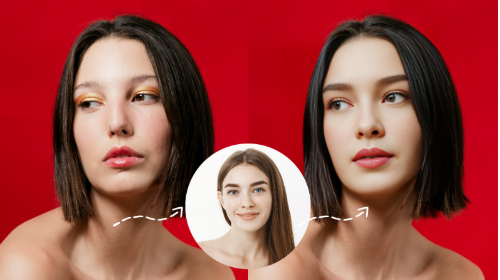Being active on social media, advertising, and entertainment in the digital era means using Face Swap technology. With this method, users can easily swap the faces of people in photos or videos using AI, which opens up numerous opportunities in digital photo editing, video creation, and content production. As AI technology has advanced, there is now more to face swapping than just playing around with fun filters; it has become an advanced yet straightforward way to transform images.
What is the face-swapping feature?
You can use Face Swap to replace a face in a photo or video with somebody else’s image. First introduced in funny apps, face swapping now plays a big role in making movies, advertising, and social posts. Analyzing facial shapes, movements, and positions, face-swapping apps ensure a seamless and unnoticeable transformation for others.
The Power of AI Behind Face Swap
Face Swap applications heavily depend on artificial intelligence today. Editing images in the past required people to work manually, but now AI takes over and does it with greater precision and in less time. GANs, that is, Generative Adversarial Networks, are machine learning models that AI can use to analyze faces.
Due to its intelligence, AI identifies and highlights the main points of a face, making the swap look completely realistic with very little user involvement. So, Face Swap, powered by AI, can create high-quality images faster and more accurately for entertainment, lessons, ads, or for anyone to enjoy.
Face Swap in Photo and Video Editing
Apps like Face Swap have changed both photo and video editing. The photo editor helps replace a bad facial expression in a group photo with a different, better image from a distinct snap. When digital marketing, brands will use Face Swap to place an influencer’s face on their ads, which helps make the content more appealing to viewers.
Face Swap technology is applied in video editing to swap characters, create deepfakes, and enhance the telling of a visual story. If someone wants to generate new content without reshooting scenes or finding more talent, a cinemagraph can be helpful. Because Face Swap is used in real-time, editors can watch their edits as they are being made and make any necessary changes.
Integrating AI Image Generators
An exciting trend is the merging of AI Image Generation with technology that allows faces to be swapped. An AI Image Generator can develop entirely new, lifelike human faces that are made up and do not exist anywhere on Earth. Once these synthetic faces are created, they can be combined with Face Swap to create original characters for use in marketing, gaming, or films.
A good example is that a game developer can make custom faces for their characters with an AI Image Generator and bring those faces to life with Face Swap in their promotions. Similarly, social media influencers can develop their visual style for storytelling without relying on regular stock photos or professional images taken by others.
Thinking about Ethics and How Responsibly I Use
The use of Face Swap is fun, but it can create ethical debates. The tools that enable foragers can also be used to create false news, fake accounts, and videos that can be harmful and untrue. People and platforms should clearly state that they have permission and be transparent about the Face Swap process.
Many developers add security features, such as watermarking and AI detection, to prevent abuse; however, ultimately, being responsible is up to the user.
Conclusion
Digital content is being transformed by Face Swap technology, which is supported by AI and AI image generators. Being able to improve selfies or make professional-looking videos is possible for everyone with this great tool. As advancements occur, all users should take advantage of technology while also being aware of their ethical responsibilities. Those working in editing, marketing, or content creation can use Face Swap to innovate and join the era of visual storytelling.


